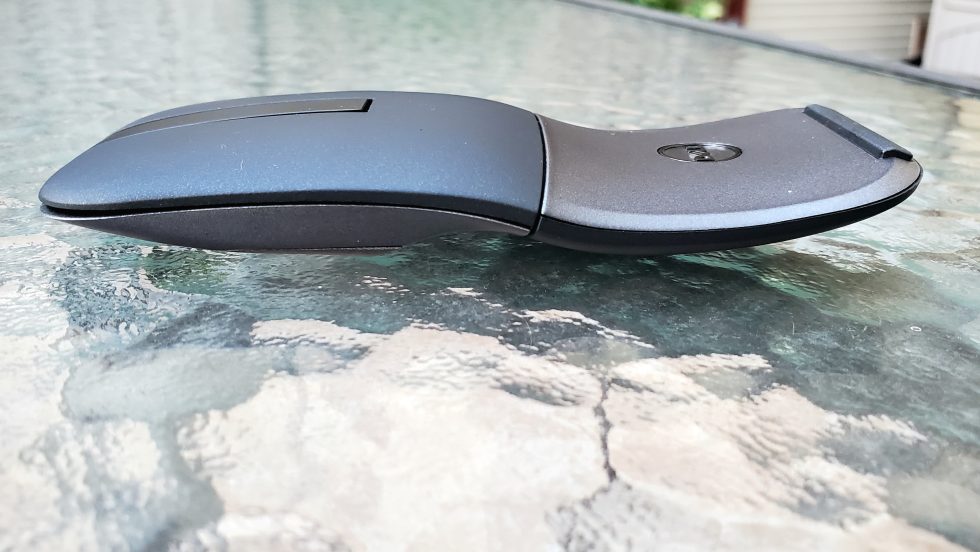
| Specs at a glance: Dell MS700 Bluetooth Travel Mouse | |||
|---|---|---|---|
| Sensor | Optical LED | ||
| Connectivity options | Bluetooth 5.0 | ||
| Programmable buttons | 0 | ||
| Onboard profiles | 0 | ||
| Lighting | None | ||
| Size | 4.59×2.25×1.17 inches (116.49×57.17×29.79 mm) |
||
| Weight | 2.01 ounces (56.9 g) |
||
| Warranty | 3 years | ||
| Price (MSRP) | $65 | ||
There's something to be said about a portable PC peripheral. With many people working in various locations and pairing PC accessories with various devices, portability has become a necessity for many. The Dell MS700 Bluetooth Travel Mouse released today prioritizes portability with Bluetooth connectivity and, more interestingly, the ability to twist into a flatter shape.
The twisted mouse is similar to mice like Microsoft's bendable Surface Arc but stands out with its ability to easily toggle across multiple paired devices, plus a cozy texture. But these are about the only enjoyable things about using the MS700.
Dell's MS700 felt scratchy when I moved it around or made extended swipes, and the touch-scroll strip is an inadequate replacement for a scroll wheel. And there are very few customization options with this $65 (MSRP) mouse.
The MS700's twisty parlor trick means it's easy to take with you, but subpar performance means you won't want to.
Table of Contents
Portability with a twist
In a unique twist, the bottom half of the MS700 (as denoted by the stern line running horizontally across the mouse) can rotate 180 degrees. Then, the mouse is no longer arched like a rainbow but, instead, looks like a slimmer, squiggly line.

The mouse is just 1.17 inches thick and 0.13 pounds, so it was remarkably easy to carry around, whether that was in my purse or on a stack of devices as I moved from one room in my home to another.
Once twisted, the mouse isn't just easier to stow; it turns off, too. That made it much easier than most other wireless peripherals I have (san some RGB options) to tell if it was on or not. Most of my wireless peripherals are left on for countless hours overnight, but I would notice if the MS700 was left on and was happy to twist it otherwise.
The MS700's adjustable shape is blatantly similar to Microsoft's long-running Arc series of mice and comparable designs, like Lenovo's Yoga Mouse. The Arc and Yoga also have arched shapes when in use but can bend to lie flat. Their flatter stature makes them seem easier to slip into a narrow compartment or pocket than the MS700's curvier design.

Without all three mice in hand, it's hard to say which mechanism is better for long-term use. The twisting mechanism in the MS700 feels secure, though. During my time with it, the mouse would stay in position even if not twisted all the way. It also takes a healthy amount of force to initiate twisting, and there's an assuring sound when the mouse locks into a completely twisted position.
For comparison, when reviewing the Surface Arc, Rtings.com wrote that "the clipping mechanism used to lock the mouse into a flat or arched shape feels well-built, but the latex material that covers the back portion of the mouse could be more susceptible to wear-and-tear." MS700 doesn't have to worry about its chassis wearing away from friction, but there are moving parts inside that could degrade over time.
For what it's worth, Dell's mouse has a three-year warranty, and the Surface Arc and Yoga mice have one-year warranties.
reader comments
16